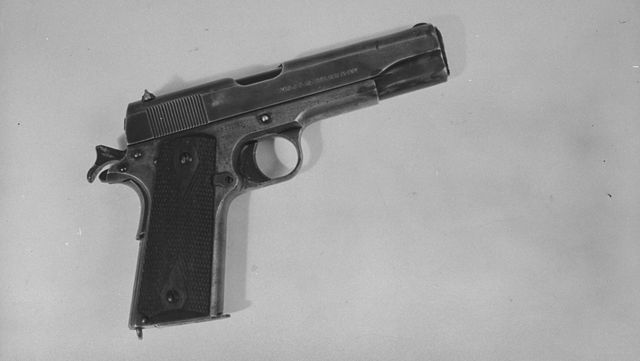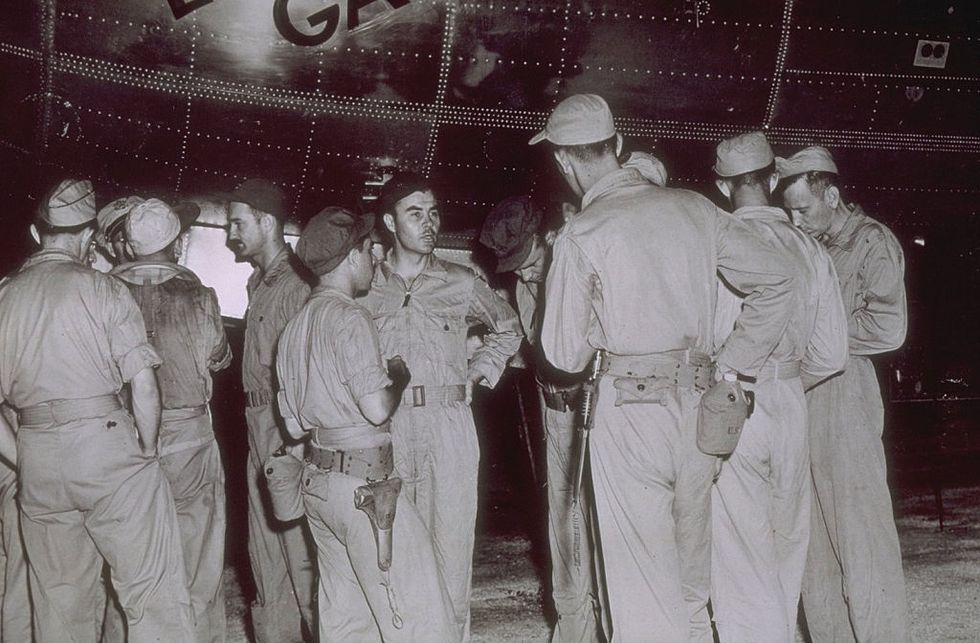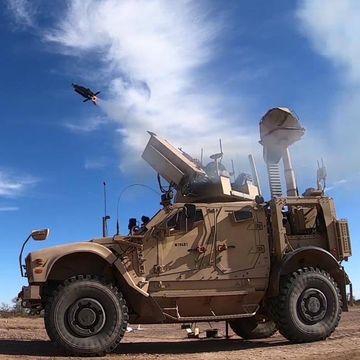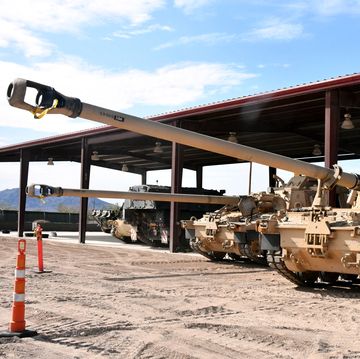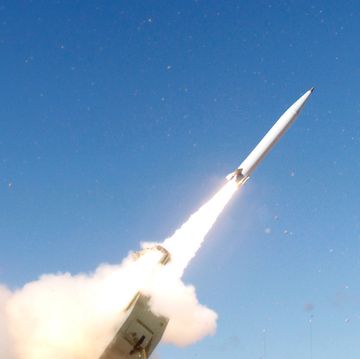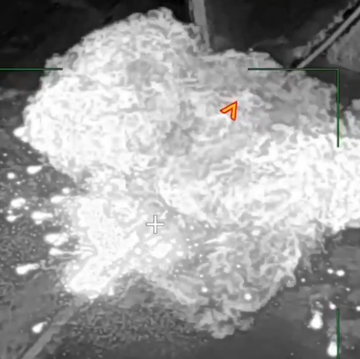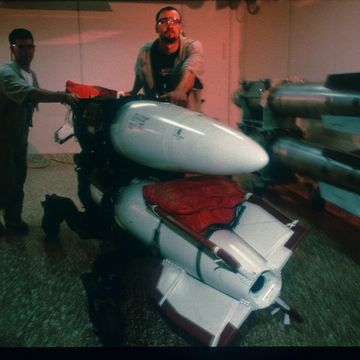The .45 caliber pistol, also known as the M1911A1, is one of the most iconic handguns ever made. Perhaps the rarest of this common breed are those made by the Singer Corporation.
Best known for manufacturing sewing machines, Singer produced a handful of .45s on the eve of World War II, and their guns were so good the U.S. Military asked the company to build more complicated equipment instead.
The M1911A1 handgun was designed by prolific arms developer John Moses Browning. The slab-sided semi-automatic handgun holds seven rounds of .45 ACP ammunition and was the standard sidearm of the U.S. military from World War I to the 1980s, a remarkable longevity. During World War I and World War II, companies that produced civilian machinery retooled to produce weapons, including the 1911. The Union Switch and Signal company, maker of railroad equipment, made the firearm. So did the typewriter manufacturer Remington Rand.
In 1939, the U.S. War Department contracted the Singer Sewing Machine Company to build 500 1911A1s. The contract, Educational Order W-ORD-396, was a test to see if Singer could produce 100 guns a day, a number it thought was doable. The War Department got its handguns, serial number series S800001-S800500, but the company was unable to live up to the pace of 100 guns a day.
Rather than complaining, the War Department gave Singer something much better to work on. The War Department realized Singer’s pistols were of such high quality that the company was qualified to do more important work, and that Singer's expert machines abilities would have been wasted on mere handguns.
Washington put the Singer Company to work on aviation-related components that required precision machining, particularly navigation and targeting equipment. During the war, Singer produced components for the Sperry T-1 bomb sight, B-29 bomber gunfire control computers, directional gyro and artificial horizon instruments, and automatic pilot parts. Singer built the sort of equipment pilots relied upon to find their targets, fend off enemy fighters, accurately deliver their bombs, and get home.
As for the 500 Singer 1911s, those handguns went to arming Army Air Force aircrews, and today are among the most desirable guns in the world of arms and armor collecting. The small number produced, their high quality, and the even smaller number of guns that survived the war make them extremely rare. In December 2017, a Singer 1911 sold at auction for an eye-popping $414,000, one of the highest prices ever paid at auction for a handgun.

Kyle Mizokami is a writer on defense and security issues and has been at Popular Mechanics since 2015. If it involves explosions or projectiles, he's generally in favor of it. Kyle’s articles have appeared at The Daily Beast, U.S. Naval Institute News, The Diplomat, Foreign Policy, Combat Aircraft Monthly, VICE News, and others. He lives in San Francisco.
